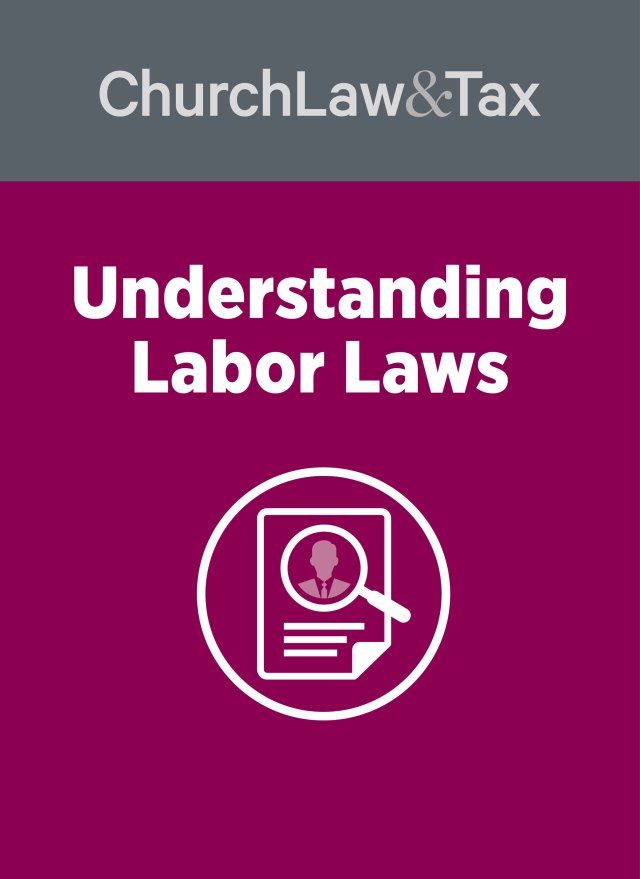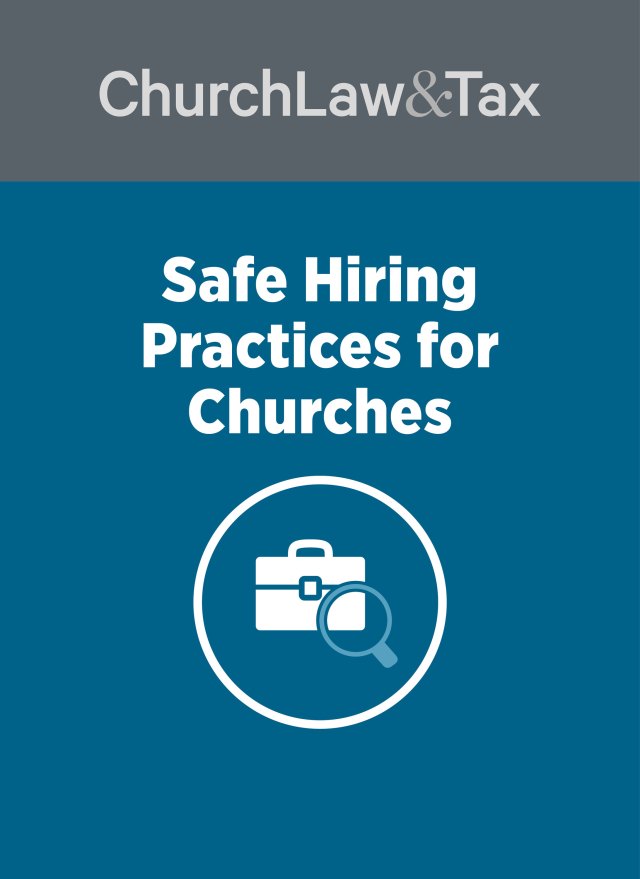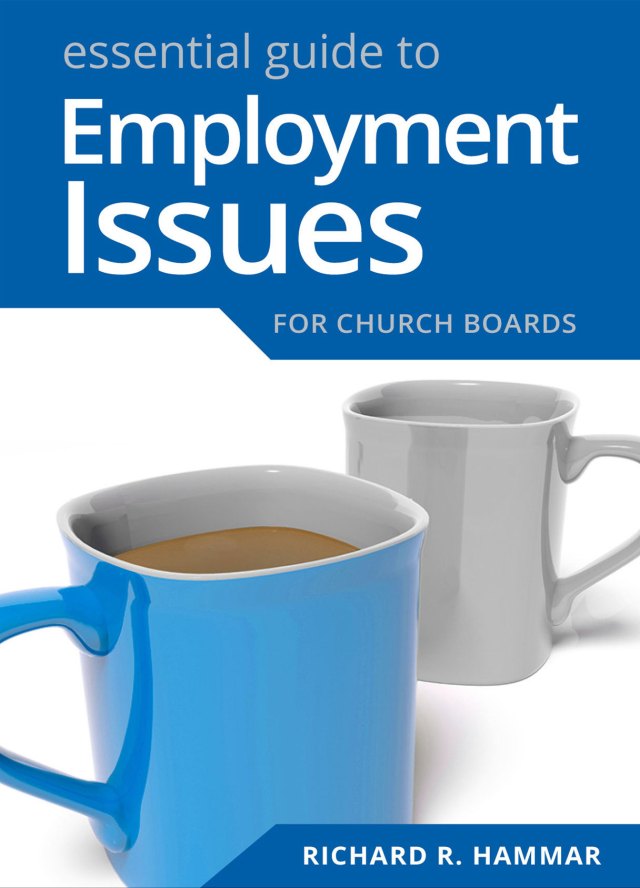• Key point 2-04.1. Most courts have concluded that they are barred by the first amendment guarantees of religious freedom and nonestablishment of religion from resolving challenges by dismissed clergy to the legal validity of their dismissals.
Termination
A federal court in Colorado ruled that it was barred by the first amendment guaranty of religious freedom from resolving a claim that a church had engaged in unlawful sex discrimination by dismissing a non-ordained female youth pastor because of her “marriage” to another woman. An Episcopal church hired a female youth pastor (Lee Ann) whose job description was to direct a youth program incorporating “fellowship, education, service, and worship.” The church did not require its youth pastor to be a member of its denomination, but it did require that the youth pastor have “a belief that Jesus is Lord and an ability to share that with youth in a constructive and non-oppressive manner.” Lee Ann quickly became involved in the youth ministry of the church. She led a youth mission trip to an Indian reservation, and planned numerous recreational and spiritual events. Her first “performance appraisal” noted that she was “inspirational to youth and loves youth; ministers to parents as well as youth.” About a year after beginning her duties as youth pastor, Lee Ann had a “commitment ceremony” with her partner who was a female pastor of another area church. This ceremony violated Episcopal doctrine embodied in the “Lambeth Resolution.” This Resolution was the result of a meeting held every ten years by the bishops from the worldwide Anglican communions which gather in Lambeth, England. The Lambeth Resolution provides:
This Conference … in view of the teaching of Scripture … (b) upholds faithfulness in marriage between a man and a woman in lifelong union, and believes that abstinence is right for those who are not called to marriage; (c) recognizes that there are among us persons who experience themselves as having a homosexual orientation … [and] we wish to assure them that they are loved by God and that all baptized, believing and faithful persons, regardless of sexual orientation, are full members of the Body of Christ; (d) while rejecting homosexual practice as incompatible with Scripture, calls on all our people to minister pastorally and sensitively to all irrespective of sexual orientation and to condemn irrational fear of homosexuals … (e) cannot advise the legitimizing or blessing of same-sex unions, nor the ordination of those involved in such unions ….
The church held a series of congregational meetings to discuss Lee Ann’s status. As it turned out, an overwhelming majority of those who spoke at the meetings supported Lee Ann. At one meeting, Lee Ann declared, “Some people say that it is not sinful to be a homosexual, but that it is sinful to engage in a homosexual relationship. This thinking is flawed for if it is really ok to be gay, then it would not be wrong to engage in a healthy, committed relationship …. Few people are called to celibacy-God gives us all desires for companionship, intimacy, for someone to share joys and sorrow with-to grow old with. I am no different. And I am blessed to have found someone like [my companion] …. The issue of homosexuality and inclusivity are at the forefront of every major denomination and threaten to tear the church apart. I want to scream out-we cannot continue to act in ways that are bigoted, intolerant, unloving, un-Christlike-because of teachings that are based on centuries of misunderstanding and prejudice.” Despite strong congregational support in favor of retaining Lee Ann, the church dismissed her as a result of her “marriage” to another woman. Lee Ann sued her church, claiming that it had discriminated against her on the basis of her sex in violation of Title VII of the Civil Rights Act of 1964.
The court began its opinion by observing that “the Supreme Court of the United States has long held that civil courts are not the proper forum to decide matters of ecclesiastical concern.” It quoted from several Supreme Court rulings, including the following:
It is of the essence of these religious unions, and of their right to establish tribunals for the decision of questions arising among themselves, that those decisions should be binding in all cases of ecclesiastical cognizance, subject only to such appeals as the organism itself provides for. Watson v. Jones, 80 U.S. (13 Wall.) 679 (1871).
In the absence of fraud, collusion, or arbitrariness, the decisions of the proper church tribunals on matters purely ecclesiastical, although affecting civil rights, are accepted in litigation before the secular courts as conclusive, because the parties in interest made them so by contract or otherwise. Gonzalez v. Roman Catholic Archbishop, 280 U.S. 1 (1929).
The opinion [in Watson v. Jones] radiates … a spirit of freedom for religious organizations, an independence from secular control or manipulation, in short, power to decide for themselves, free from state interference, matters of church government as well as those of faith and doctrine. Freedom to select the clergy, where no improper methods of choice are proven, we think, must now be said to have federal constitutional protection as a part of the free exercise of religion against state interference. Kedroff v. St. Nicholas Cathedral of Russian Orthodox Church, 344 U.S. 94 (1952).
The “Clergy Exception”
The court noted that “in keeping with the Supreme Court’s caution against encroachment by the state into areas of church administration or selection of clergy … the ministerial exception precludes civil courts from adjudicating employment discrimination suits between ministers and the church employing them.” The court noted that numerous federal courts have ruled that the “ministerial exception” bars the application of civil rights laws, including the Civil Rights Act of 1964, to discrimination claims by clergy against their employing church.
Lee Ann claimed that the ministerial exception did not apply to her, since she was not an ordained minister. The court disagreed, noting that whether an individual is a minister under the ministerial exception does not depend on ordination or title “but rather upon the function of the position.” The court noted that the ministerial exception has been extended to “lay employees of religious institutions whose primary duties consist of teaching, spreading the faith, church governance, supervision of a religious order or participation in religious ritual and worship.” The court carefully analyzed Lee Ann’s position as youth pastor, and concluded that she was a minister for purposes of the ministerial exception and therefore her claims against the church were barred by the first amendment. It concluded:
[T]he undisputed facts reveal that [Lee Ann’s] activities while employed at [the church] served a traditionally religious function necessary to fulfill the church’s spiritual and pastoral mission. [Her] statements and activities lead the court to conclude that [her] duties as youth minister were pervasively religious. Although [she] planned and organized many activities which were secular in nature, these activities were aimed at achieving a spiritual purpose. [Her] activities fulfilled [the church’s] desire to build a healthy youth ministry that would help the church attract and retain families to the parish. Therefore the court finds that [she] functioned as a minister as that term is used in the context of the ministerial exception. Accordingly [her] Title VII sexual harassment claims are barred ….
The Smith Case
In 1990, the Supreme Court ruled that “neutral laws of general application” do not violate the first amendment guaranty of religious freedom even if they impose substantial burdens on the exercise of religion. Employment Division v. Smith, 494 U.S. 872 (1990). Lee Ann argued that this ruling meant that civil rights laws can be applied to churches and clergy without violating the first amendment, since such laws are “neutral laws of general application.” The court disagreed, noting that all courts that have addressed the issue have “recognized the continuing vitality” of the ministerial exception following the Smith ruling. The court noted that the ministerial exception is “congruent with the Supreme Court’s determination that the first amendment limits a court’s ability to meddle with a church’s affairs, including its relations with its ministers.”
Application. This case illustrates the following three points: (1) The ministerial exception has been almost universally recognized by both federal and state courts, and it provides churches with virtual immunity from employment discrimination claims by current of former ministers. (2) The term “minister” is not limited to ordained clergy, but can include lay employees “whose primary duties consist of teaching, spreading the faith, church governance, supervision of a religious order or participation in religious ritual and worship.” (3) The ministerial exception survived the Supreme Court’s decision in the Smith case. The fact that civil rights laws are “neutral laws of general application” does not mean that they can be applied to the minister-church relationship. Bryce v. Episcopal Church in the Diocese of Colorado, 121 F.Supp.2d 1327 (D. Colo. 2000).
© Copyright 2001 by Church Law & Tax Report. All rights reserved. This publication is designed to provide accurate and authoritative information in regard to the subject matter covered. It is provided with the understanding that the publisher is not engaged in rendering legal, accounting, or other professional service. If legal advice or other expert assistance is required, the services of a competent professional person should be sought. Church Law & Tax Report, PO Box 1098, Matthews, NC 28106. Reference Code: m31 m47 c0201




